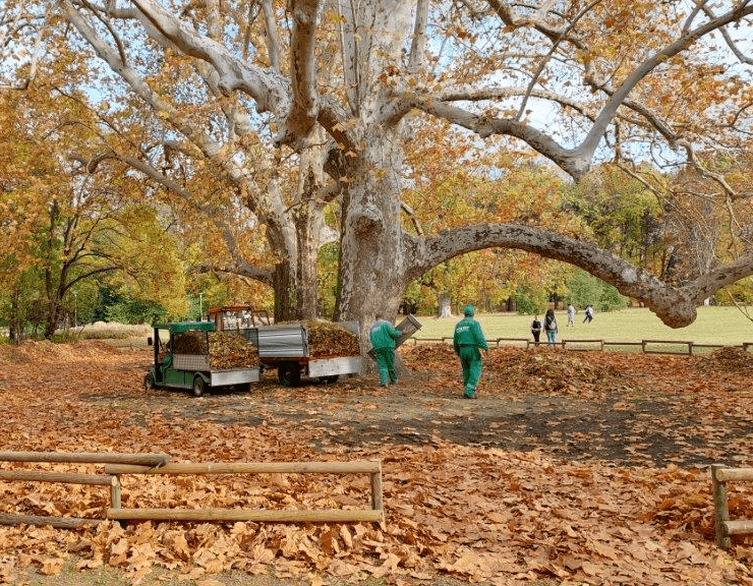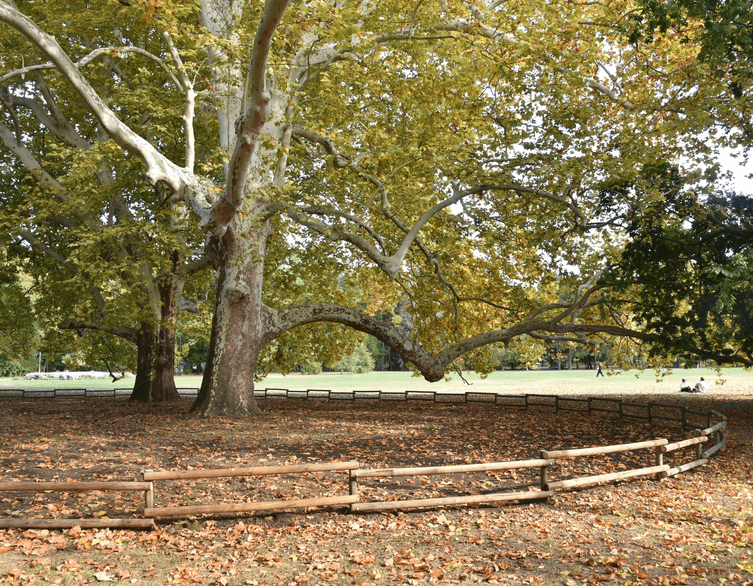Budapest’s Brilliant Autumn Leaf Strategy: Nature’s Way of Saying “Relax, We’ve Got This”

When autumn transforms Budapest’s parks into golden wonderlands, observant tourists might notice something delightfully unusual. The fallen leaves aren’t immediately swept away into oblivion. Instead, they’re resting peacefully beneath shrubs, gathering in designated composting areas, and creating what looks like nature’s own cozy blanket. But this isn’t neglect—it’s sophisticated urban ecology in action, proving that sometimes the smartest solution is letting nature do what it does best.
The Genius Behind the Leaf Piles
Budapest’s park management has embraced a refreshingly simple approach: work with nature instead of fighting it. For years now, the city composts a significant portion of fallen leaves directly on-site. Park workers sweep leaves beneath shrubs where they function as natural mulch, protecting plant roots from winter’s chill. In larger quantities, they create fenced composting areas where leaves rest until early spring.
Throughout winter, these leaves break down naturally, returning precious nutrients directly to the soil. The process requires no fancy machinery, no chemicals, and no complex infrastructure—just patience and respect for natural cycles. As a bonus, the decomposing leaf piles provide cozy winter shelters for hedgehogs settling in for their long winter naps. Budapest has created five-star hedgehog hotels without even trying.
Why This Actually Makes Perfect Sense
The environmental benefits extend far beyond happy hedgehogs. Fewer leaf collection trucks mean reduced air pollution from diesel emissions. After autumn rains, the leaf piles compress significantly, so the volume requiring spring removal shrinks dramatically, saving fuel and money. The decomposing leaves also improve soil structure, making it spongier and better able to absorb rainfall—increasingly valuable as climate change brings both intense rainstorms and drought periods.
Margaret Island’s Celebrity Trees Get the VIP Treatment
On Margaret Island, Budapest’s beloved green oasis, park management has taken the composting strategy to impressive new heights around two particularly special London plane trees. These magnificent specimens, with their distinctive pale bark earning them the nickname “silver planes,” date back to approximately 1850. They’ve witnessed nearly 175 years of Budapest’s history.
Workers installed protective fencing around each tree and piled generous amounts of fallen leaves inside. As these leaves decompose, they’ll improve soil structure and boost water retention, addressing compaction problems that threatened these ancient giants after decades of foot traffic. It’s sophisticated tree care that looks surprisingly simple—and that’s exactly the point.
Finding Composting Areas Throughout the City
Major parks throughout Budapest feature designated leaf collection areas. Városmajor maintains several composting zones beneath its mature tree canopy. Népliget dedicates substantial areas to on-site composting. Even Gellért Hill’s parks and the Tabán neighborhood’s gardens incorporate composting zones wherever feasible.
Best deals of Budapest
These areas aren’t hidden—park management wants visitors to see and understand the process. The leaf piles create habitat, produce natural fertilizer, deliver environmental benefits, and reduce unnecessary labor and pollution. That’s a lot of wins from what essentially amounts to “leaving leaves where they fell, but organized.”
The Remarkable Tree Attitude Revolution
Older Budapest residents remember dramatically different attitudes toward trees. During World War II and afterward, trees represented consumable resources—firewood for heating, construction materials for repairs. The temporary Manci Bridge was built partially from timber when permanent materials remained scarce.
Contemporary Budapest reveals a complete transformation. Public concern for tree preservation has grown so strong that removing even genuinely dangerous specimens can provoke passionate community reactions. The pendulum has swung from “use everything” to “protect everything green,” and park management now balances legitimate public concern with necessary interventions that ensure long-term forest health.
Why Talking with Communities Makes All the Difference
Successful urban forest management increasingly depends on meaningful conversations between professionals and residents. These discussions explain the history of familiar green spaces, their current conditions, and available interventions. Transparency about climate change impacts and evolving community needs proves essential for building trust.
Research suggests people more readily contribute time than money to green space maintenance. Voluntary involvement finds easier acceptance than admission charges, which explains successful initiatives like the Locsolakoma watering campaign that engaged volunteers in maintaining street trees during heat waves.
A Tourist’s Guide to Appreciating Budapest’s Beautiful Approach
Understanding Budapest’s composting philosophy enriches your park visits considerably. Those leaf piles aren’t evidence of neglect but rather signs of ecological sophistication and long-term thinking. When you visit Margaret Island and notice the protected zones around those magnificent silver plane trees, you’re witnessing thoughtful urban ecology in action.
Budapest’s parks invite a different kind of engagement than perfectly manicured gardens. They ask you to appreciate natural processes alongside visual beauty, and to recognize that sometimes the most sustainable approach looks slightly different from what you might expect. The fallen leaves carpeting paths and piling beneath shrubs aren’t disorder—they’re nature working exactly as designed, with thoughtful human assistance rather than interference.
That’s Budapest’s gift to its green spaces—allowing nature’s elegant cycles to complete themselves with minimal interference and maximum benefit. Plus, those hedgehogs sleeping peacefully in their leaf-pile hotels will definitely appreciate your understanding. And honestly, keeping hedgehogs happy seems like an excellent reason to embrace just about any park management strategy.
Related news






















